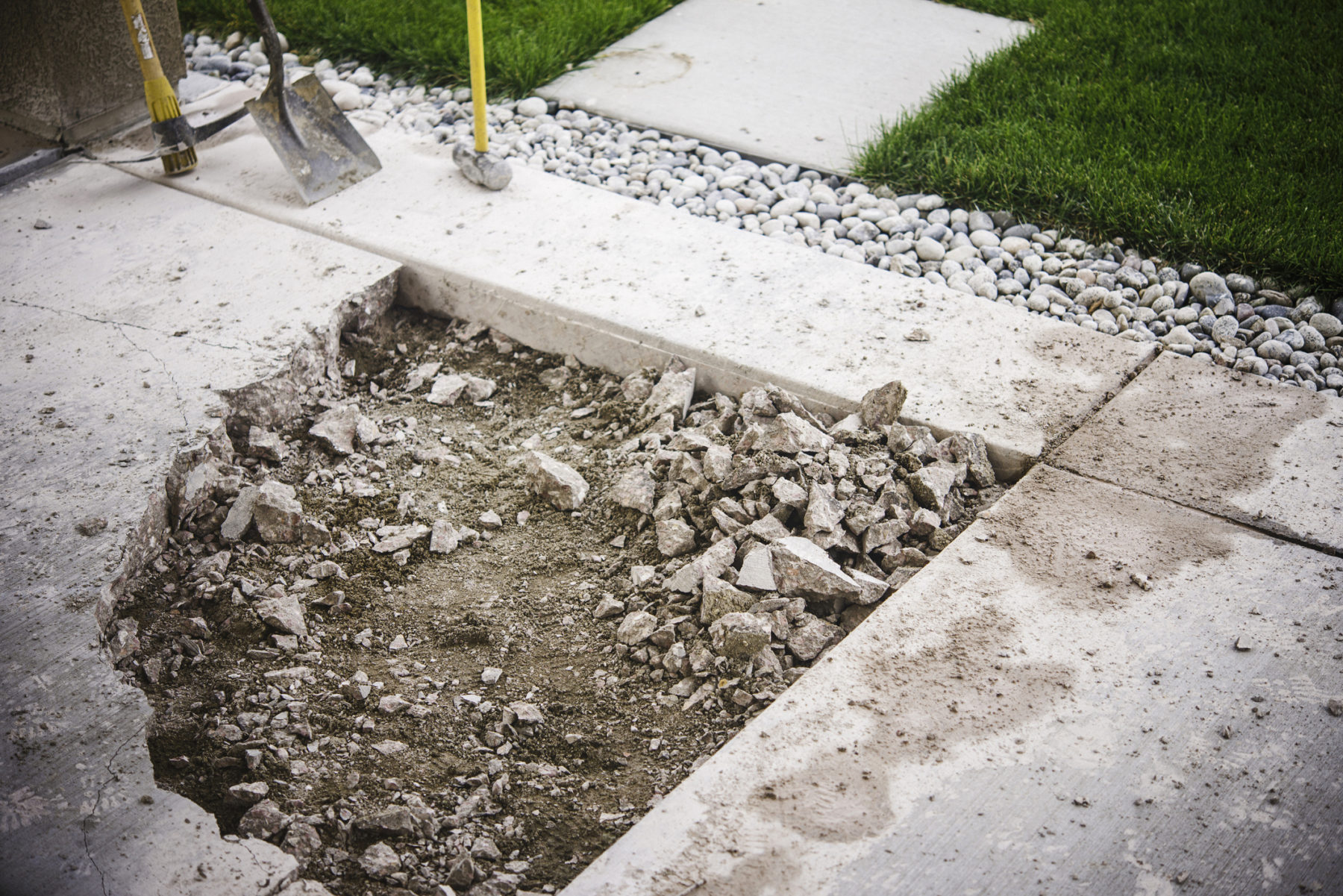How to Remove Old Concrete
January 9, 2023

The steps involved in removing old concrete can range from simple to complex. For small projects, most homeowners who are comfortable with using sledgehammers and circular saws can tackle them in a weekend. For larger projects, however, heavy machinery may be required. Below, you can learn more about how to remove old concrete in both scenarios.
Small Projects: Porch, Patio, or Garage Floor Removal
Homeowners who are interested in removing porches, patios, or even garage floors can do so in the span of a weekend with the right tools and knowledge. Tools required may include a shovel, bolt cutters, circular saw, sledgehammer, long bar, and plastic sheeting. If the concrete is more than four inches thick, a demolition hammer (jackhammer) is often required, and these can usually be rented locally.
To start, cover the entire concrete area with thick, sturdy plastic sheeting. Then, if the placement of the concrete allows, dig under it to loosen it, which makes it easier to break apart. Starting six to eight inches from the edge of the concrete, use the sledgehammer to break it up, and work your way in toward the center of the slab. As you work your way inward, use the long bar to pry the concrete up and make it easier to remove. If you come across mesh wire, snip it with bolt cutters; similarly, if you find rebar, use a circular saw with an appropriate blade to cut through it. Continue this process until the concrete is broken up into small enough pieces to manipulate.
Large Projects: Buildings, Large Retaining Walls, & More
When substantial amounts of concrete must be removed, it is often safer and more efficient to utilize different methods and tools. There are several methods of “bursting” the concrete that can be employed.
- Mechanical Bursting: Mechanical bursting involves the use of a splitting machine that operates on hydraulic pressure. Boreholes are drilled into the concrete, and these machines put pressure on the concrete via these boreholes to split it into more manageable pieces. It is quiet and inexpensive, but it can be difficult to control cracks and concrete movement during the process.
- Chemical Bursting: Chemical bursting also utilizes boreholes drilled into the concrete, but in this case, an expanding slurry is injected down into the holes, which forces the concrete to crack and break. It costs more than mechanical bursting, but it gives the contractors far more control over the processes. It is also temperature-sensitive since freezing temperatures can reduce the slurry’s expansion, thereby reducing overall effectiveness.
Concrete structures can also be cut into pieces and removed via crane. Traditional sawing is one option for cutting concrete into manageable pieces, but water-jetting, which uses a high-powered stream of water to slice through the concrete, and thermic lancing, which utilizes heat to cut through concrete and reinforcing steel, are also common. For especially large, multi-story buildings, explosives can be the best option. These require extensive permits that can only be obtained by well-trained professionals.
Destinations for Old Concrete
Whether you load the concrete that was once your patio into the back of your pickup truck, or a contractor loads an entire concrete structure into a container via crane, it can have several different destinations. Though it isn’t ideal, a great deal of the concrete ends up in landfills. Though it will break down eventually thanks to erosion, this process can take hundreds or even thousands of years. Larger cities and urban areas are introducing concrete recycling facilities that break up old concrete even further, then use it to produce new concrete for government or private use.
Removing old concrete can be as simple as breaking it up with a sledgehammer or as complex as using explosives to demolish entire structures. If you are unsure of the best way to break up and remove your old concrete, contact HK Contractors and we’d be glad to provide some pointers, or you can hire us to do the job for you. We take on projects of varying sizes, and we’d be happy to provide you with an estimate for your project.

